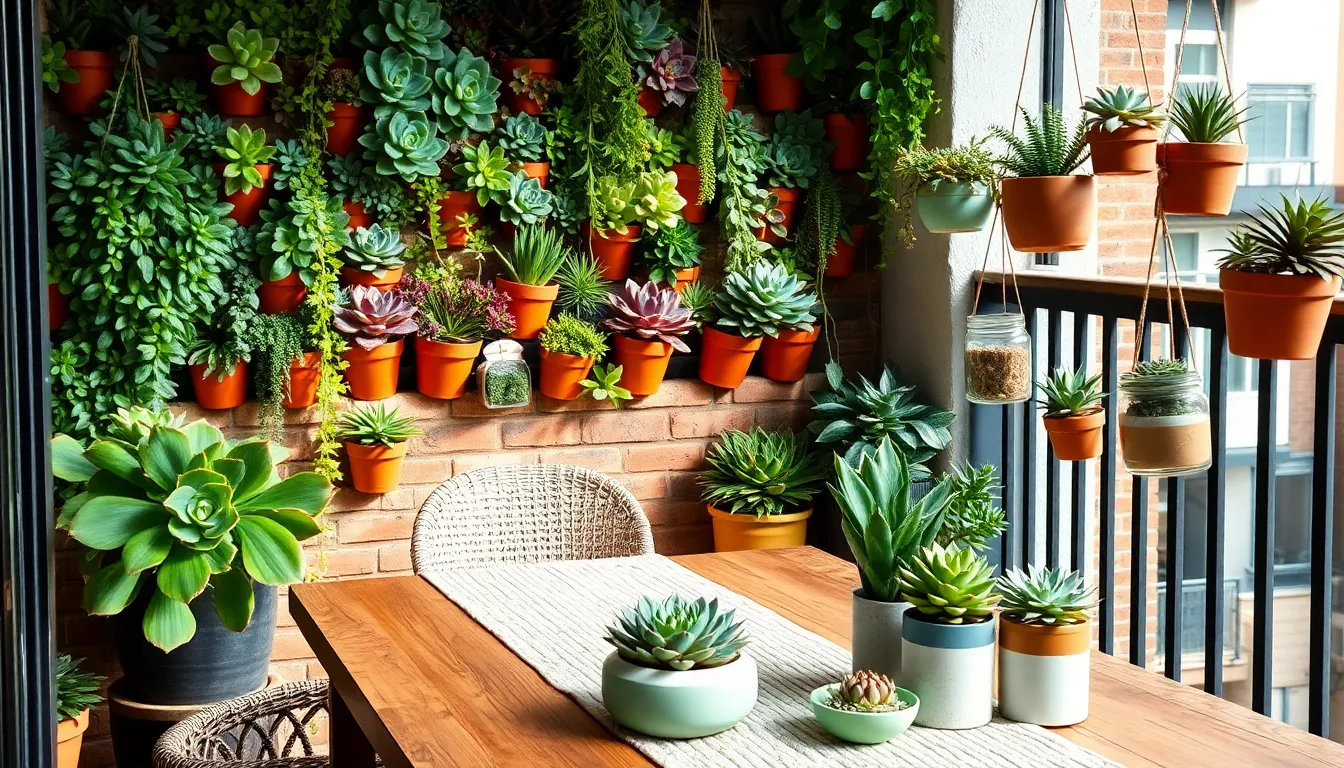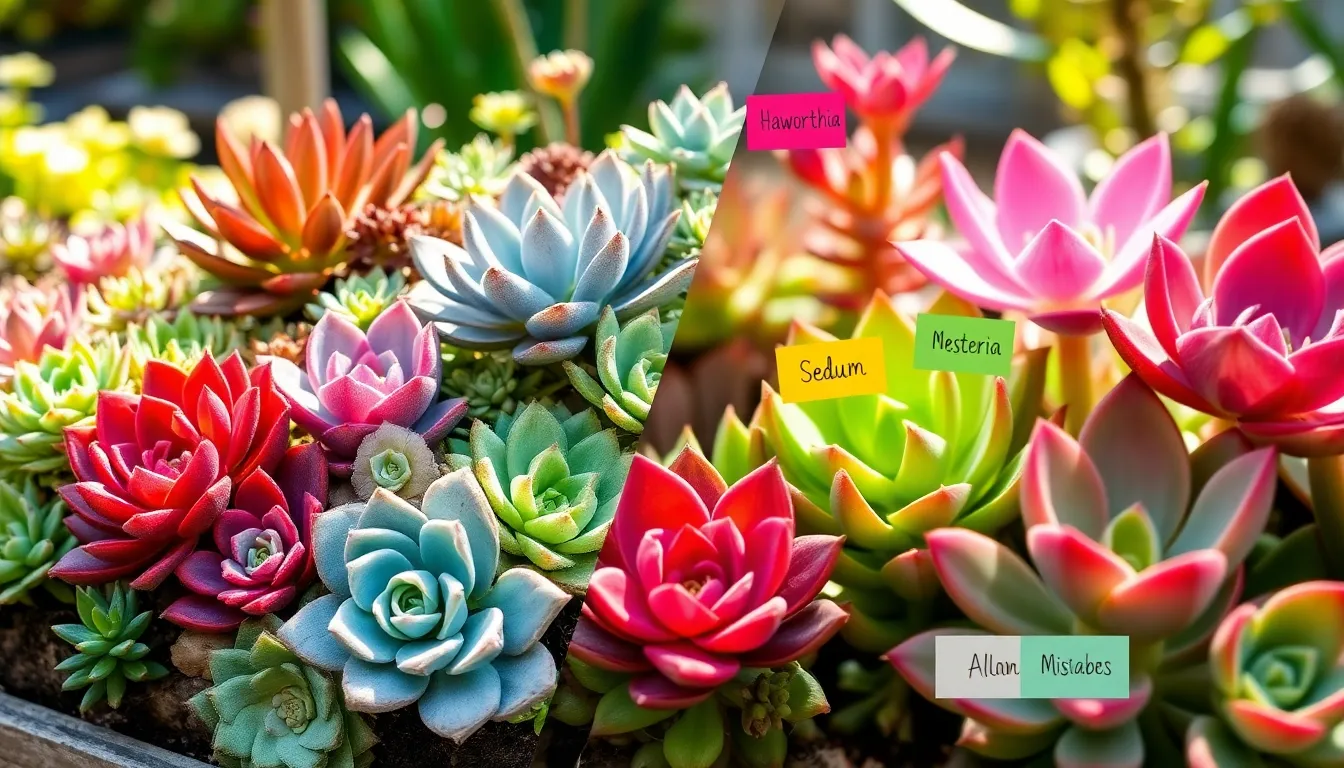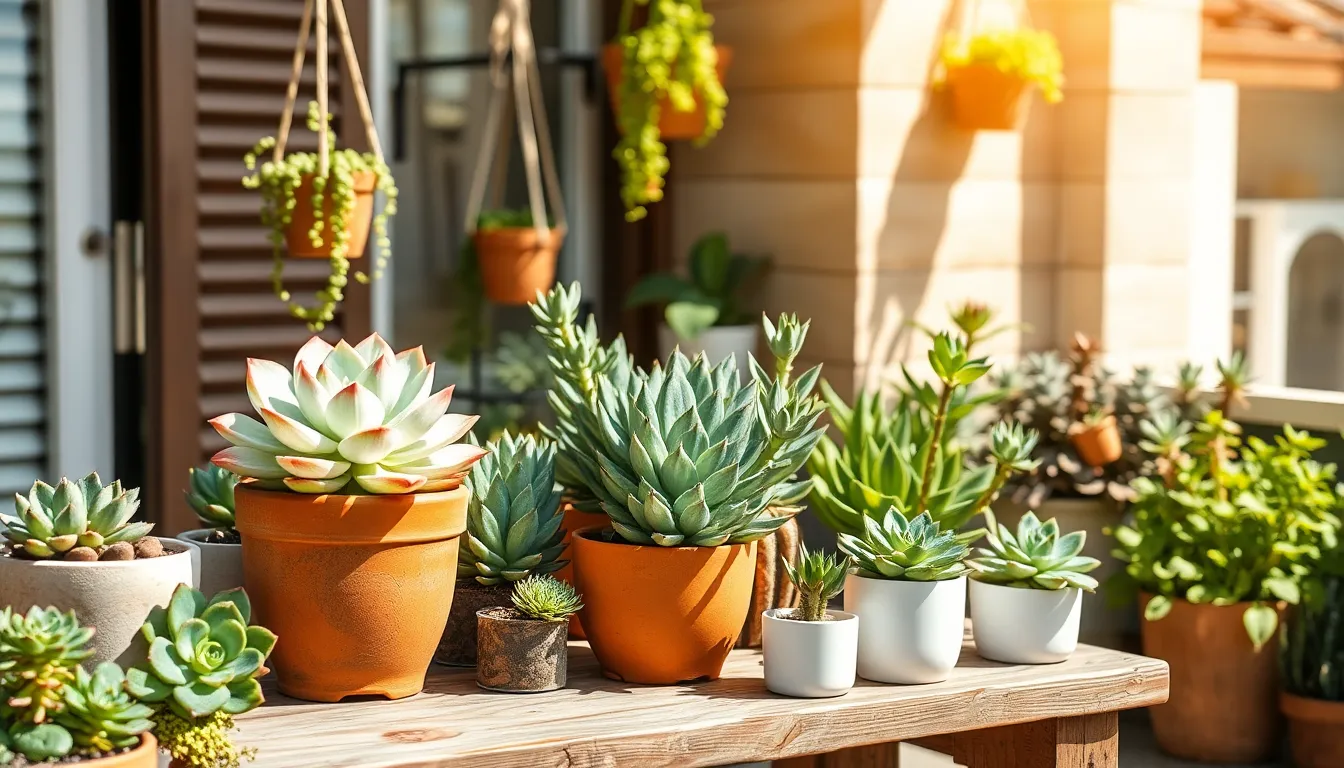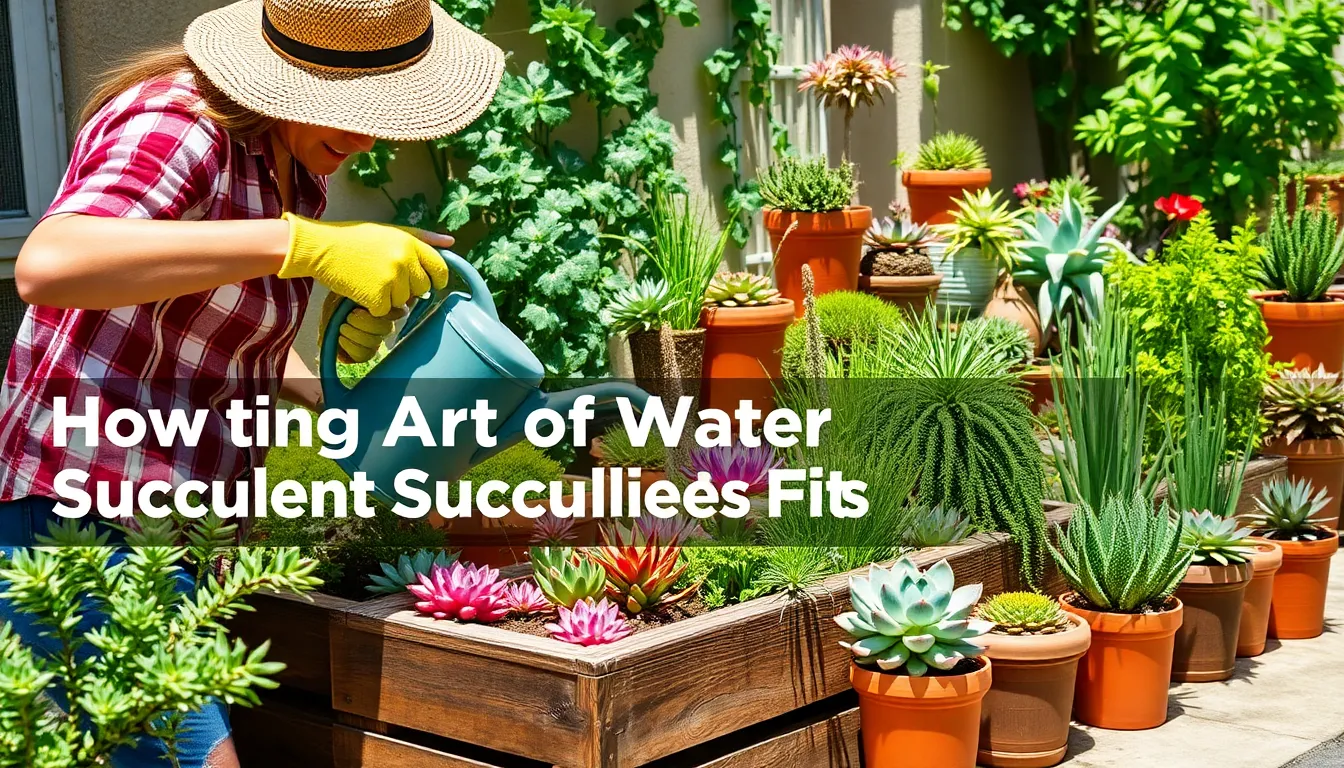In the bustling rhythm of city life, where space is often a precious commodity, finding room to nurture a garden can feel like an impossible dream. Yet, for both the seasoned gardener and those just dipping their toes into the world of plants, succulents offer an inviting gateway to cultivate beauty and tranquility right within your small apartment. These resilient, charming plants are the perfect companions for urban dwellers, bringing a touch of nature to even the tiniest of spaces with their vibrant colors and intriguing shapes.
Succulents, with their low-maintenance demeanor and diverse appearance, make them an ideal choice for indoor gardening enthusiasts of all levels. Whether you’re a novice looking to start your first collection or an experienced gardener seeking to expand your green thumb into new territory, succulents promise an exciting adventure. In this article, you’ll discover practical tips on selecting the right varieties, insights into creating your own miniature desert landscape, and expert advice on keeping your plants healthy and thriving.
As we explore the world of succulent gardening, we’ll focus on how to maximize your apartment’s potential, transforming it into a lush oasis with just a few well-placed pots. We’ll delve into the nuances of light, water, and soil—critical elements that ensure your succulents flourish in their urban habitat. By the end of our journey, you’ll be equipped with the knowledge and confidence to cultivate your own little garden of wonders, right in the heart of your home.
Choosing Compact Succulent Varieties
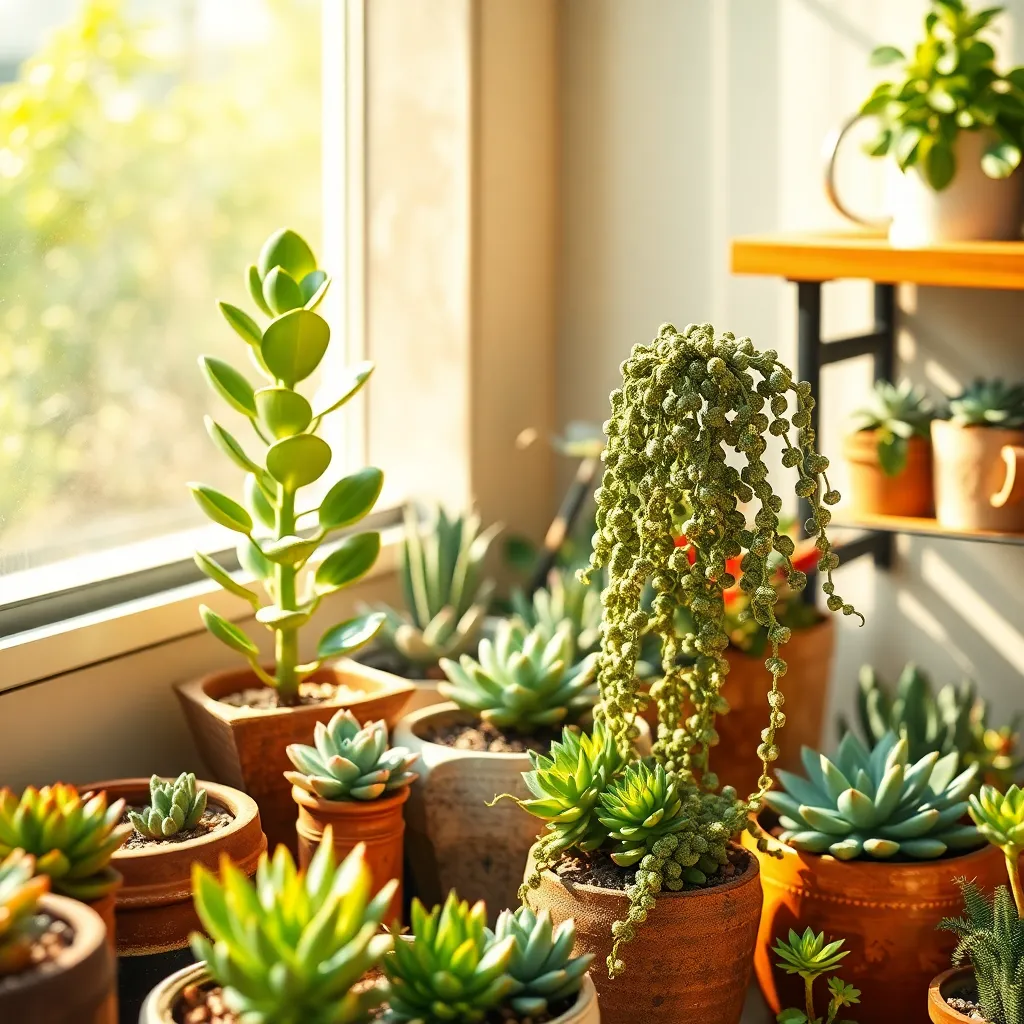
In small apartments, selecting the right succulent varieties is crucial for maximizing space while adding greenery. Opt for compact types like Haworthia, Echeveria, and Sempervivum, which thrive in confined areas.
Echeverias, with their rosette shapes, are perfect for windowsills and require bright, indirect light to maintain their vibrant colors. Water them sparingly, allowing the soil to dry out completely between waterings to prevent root rot.
Haworthias are hardy and can tolerate lower light conditions, making them ideal for rooms with less sunlight. Plant them in a well-draining cactus mix and fertilize lightly during the growing season to promote healthy growth.
Consider using shallow containers to accommodate the shallow roots of these succulents, which helps in controlling growth and avoiding overwatering. Ensure the pots have drainage holes to prevent water from pooling, which can lead to root rot.
Optimizing Light in Small Spaces
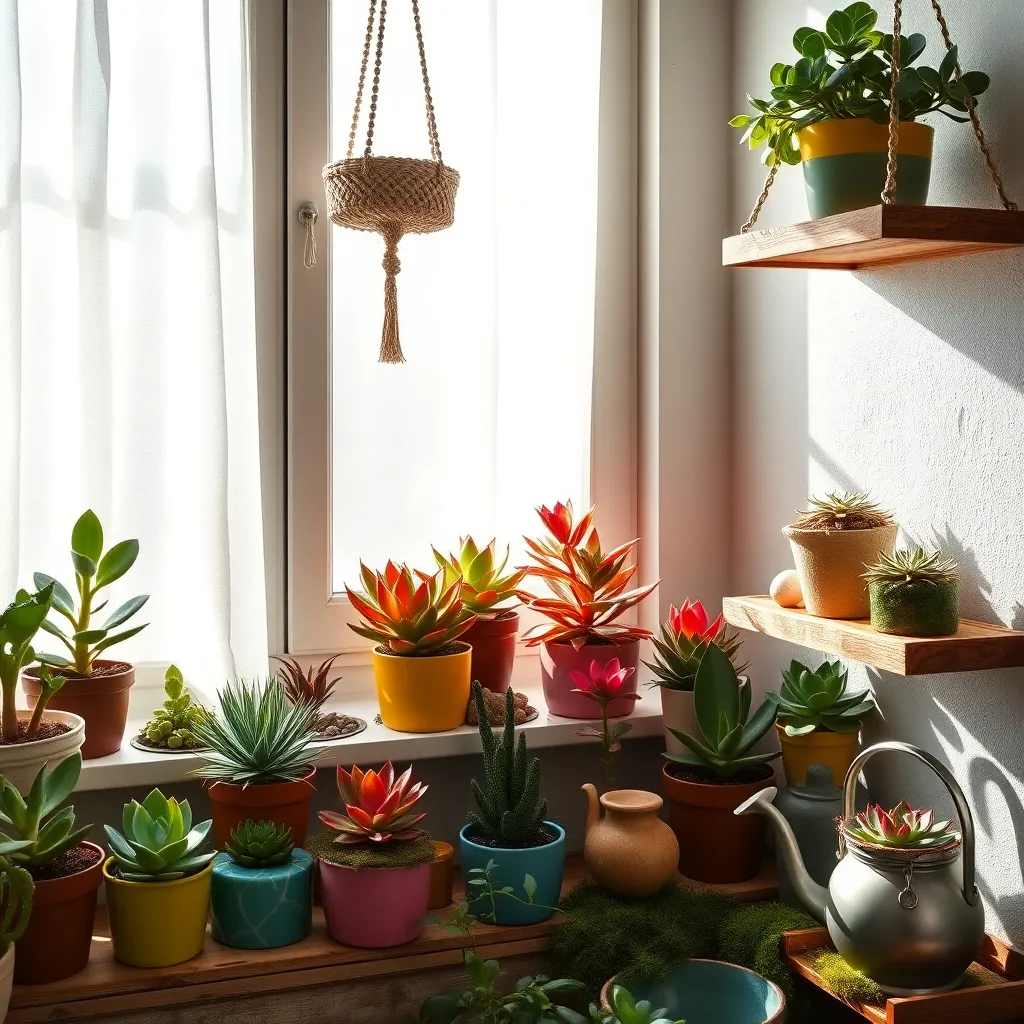
Maximizing light in a small apartment is crucial for succulent success. Position your plants near a south or east-facing window to take advantage of the most sunlight available.
For spaces with limited natural light, consider using grow lights to supplement sunlight. LED grow lights are energy-efficient and can be adjusted to provide the full spectrum of light that succulents need.
Rotate your succulents every few weeks to ensure even growth and prevent them from leaning towards the light source. This simple practice keeps your plants balanced and promotes healthy development.
Reflective surfaces can also help to optimize light in your space. Use mirrors or light-colored walls near your plants to bounce additional light onto them.
Be mindful of the distance between your succulents and any artificial light sources. A distance of 6 to 12 inches is generally effective for most grow lights, ensuring that your plants receive ample illumination without overheating.
Creative Containers for Tiny Areas
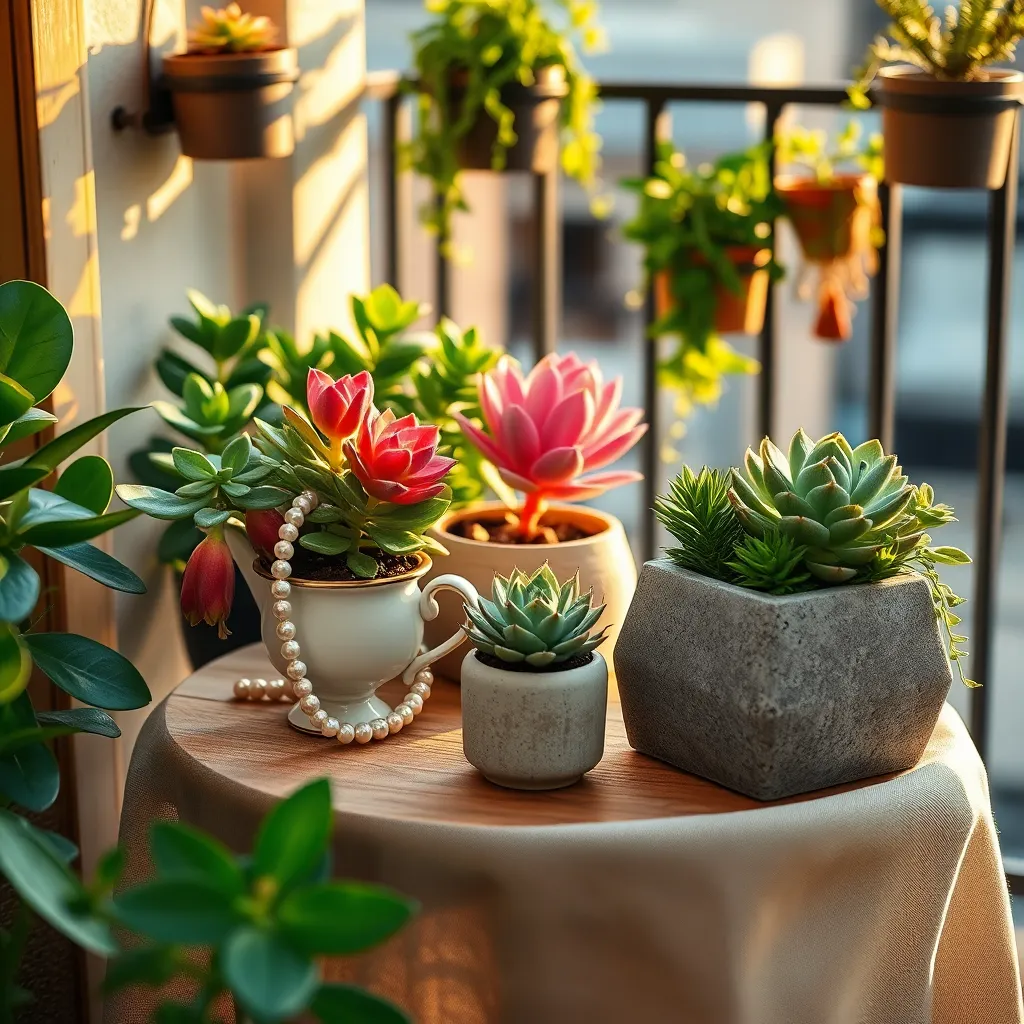
In small apartments, selecting the right containers can make all the difference for successful succulent gardening. Opt for shallow, wide containers that maximize surface area, allowing more room for your succulents to spread their roots without taking up much vertical space.
Consider using repurposed items like teacups, old baking pans, or even broken ceramic pots to create interesting and unique displays. These containers not only save money but also add a personal touch to your garden, making it truly your own.
When choosing containers, ensure they have adequate drainage holes to prevent water from pooling at the bottom. Succulents are susceptible to root rot, so it’s crucial that excess water can escape, keeping the soil relatively dry and the plants healthy.
For beginners, a cactus mix or a homemade blend of equal parts potting soil, sand, and perlite can provide excellent drainage and aeration. More experienced gardeners might experiment with adding organic materials like coconut coir to further enhance moisture retention while still maintaining good drainage.
Succulents generally thrive with minimal watering; aim to water them about once every two weeks, or when the soil feels completely dry to the touch. More advanced gardeners could use a moisture meter to ensure precision, especially in varying humidity conditions, to maintain optimal plant health.
Watering Tips for Indoor Succulents
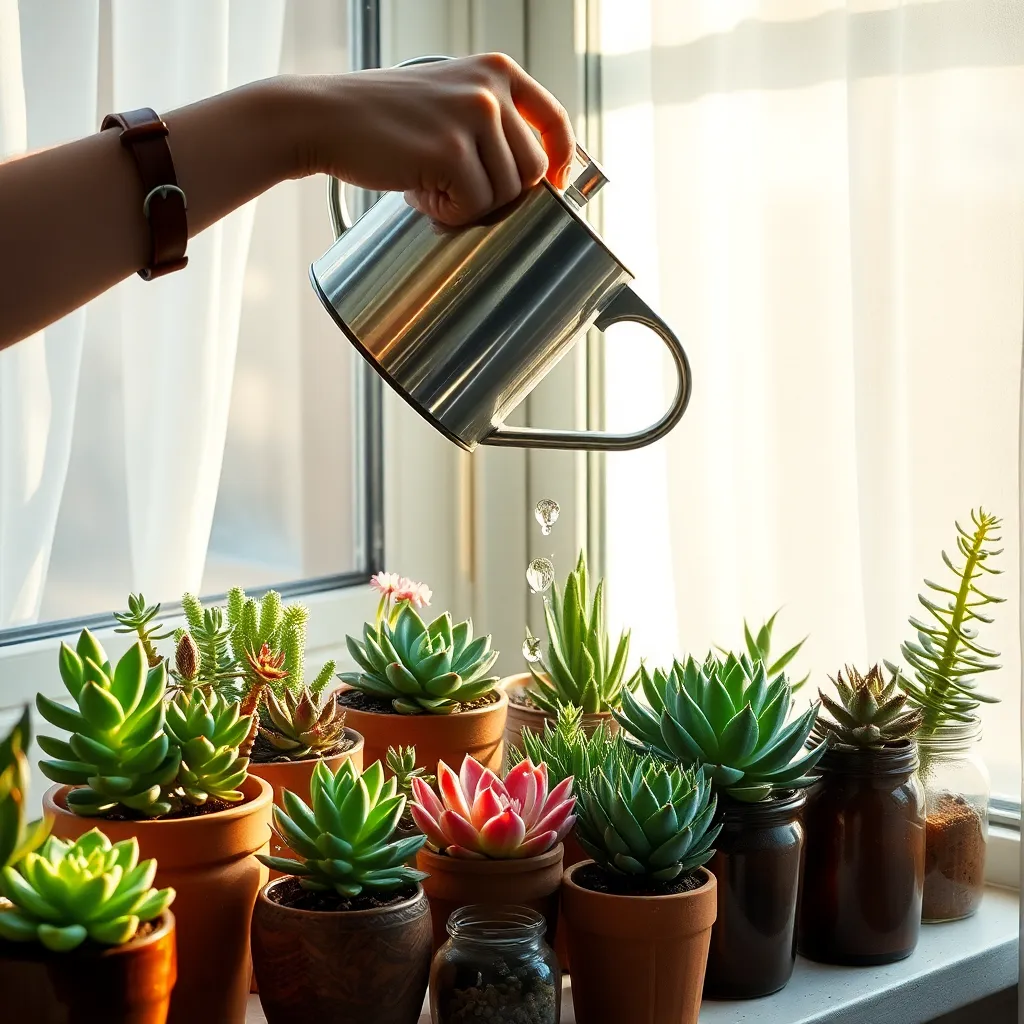
Watering indoor succulents requires a delicate balance to mimic their natural arid environment. Overwatering is the most common mistake, so let the soil dry out completely between waterings.
Beginners should water their succulents every two to three weeks, depending on the humidity of the room. Use a pot with drainage holes and a well-draining soil mix, such as a cactus or succulent blend, to prevent water retention.
Advanced gardeners might experiment with the “soak and dry” method. This involves soaking the soil thoroughly and then allowing it to dry out completely, which encourages healthy root growth.
Consider using a moisture meter to check the soil’s dryness before watering, especially in the cooler months when succulents require less water. Avoid misting, as succulents absorb moisture through their roots, not their leaves.
Pay attention to the leaves of your succulents; they can provide clues about their watering needs. Wrinkled leaves may indicate under-watering, while mushy leaves are a sign of overwatering.
Maintaining Healthy Indoor Succulents
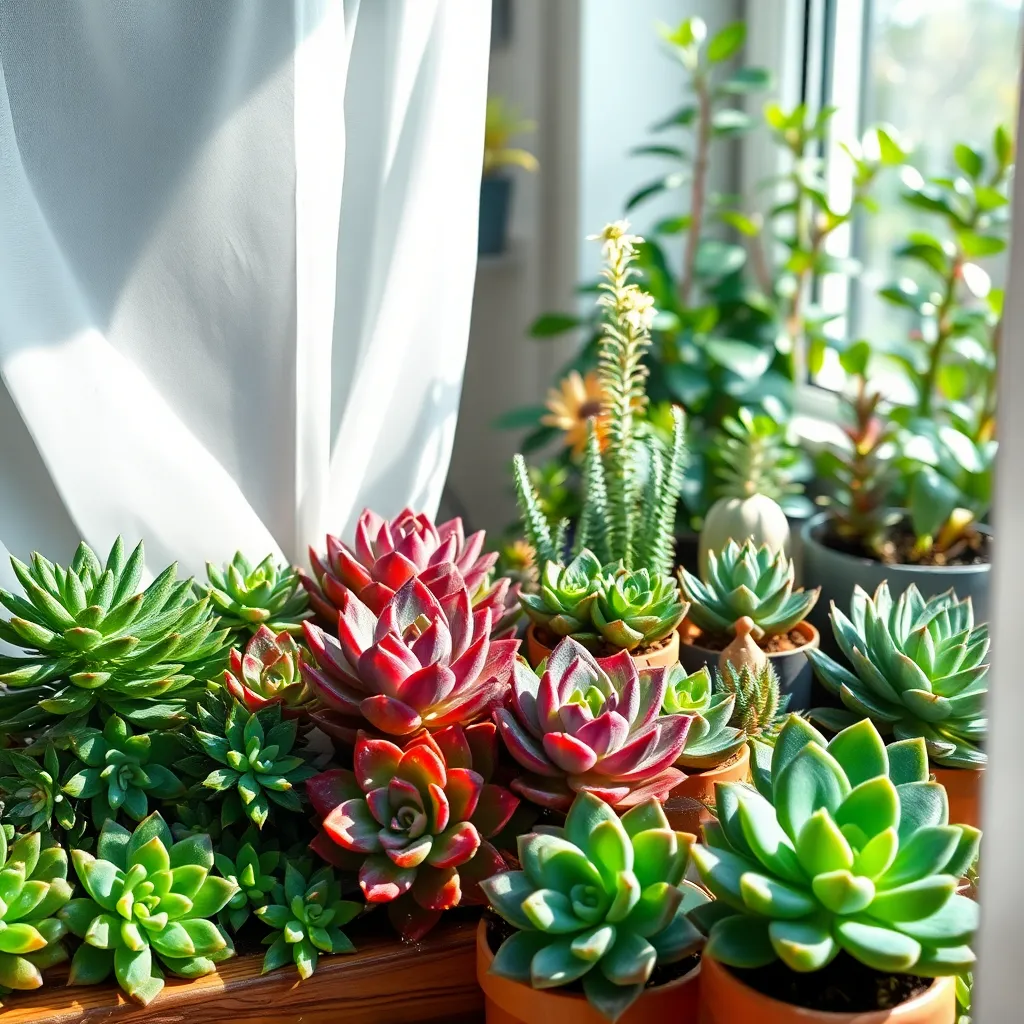
To maintain healthy indoor succulents, it’s essential to ensure they receive adequate light. Place them near a south or east-facing window where they can bask in bright, indirect sunlight for most of the day.
Using the right soil is crucial for succulent vitality. Opt for a well-draining cactus or succulent mix, which you can enhance by adding a bit more perlite or coarse sand to improve drainage.
While succulents are known for their low water needs, they do require occasional attention. It’s best to water them thoroughly, allowing the water to drain completely, and then letting the soil dry out entirely before the next watering.
For those looking to advance their succulent care, consider the humidity levels in your apartment. Succulents prefer low humidity, so try to maintain a dry environment, possibly with the help of a dehumidifier if your living space tends to be moist.
Regular inspection of your succulents can help catch any potential issues early. Look out for signs of pests or diseases, such as discolored leaves or spots, and address them promptly with appropriate treatments.
Conclusion: Growing Success with These Plants
In “Succulent Gardening for Small Apartments,” we explored five key relationship concepts that parallel the nurturing of a thriving plant: patience, communication, adaptability, space management, and shared growth. Just as succulents require patience to flourish, so do our relationships; they benefit from clear communication, adapt to change, and thrive when space is managed well. Additionally, both relationships and plants grow more vibrant when nurtured together with shared goals and efforts.
To put these insights into action, take a moment today to identify one area in your relationship that could use a little extra attention—whether it’s initiating an open conversation or planning a small activity together. This simple step can rejuvenate your connection and pave the way for mutual growth.
We encourage you to save or bookmark this article as a handy guide for your relationship journey. By revisiting these concepts, you can continue to cultivate a flourishing relationship landscape. Remember, with dedication and care, your relationship will not only survive but thrive, much like a well-tended succulent garden. Let this be your reminder that nurturing your relationship is an ongoing, rewarding process.

